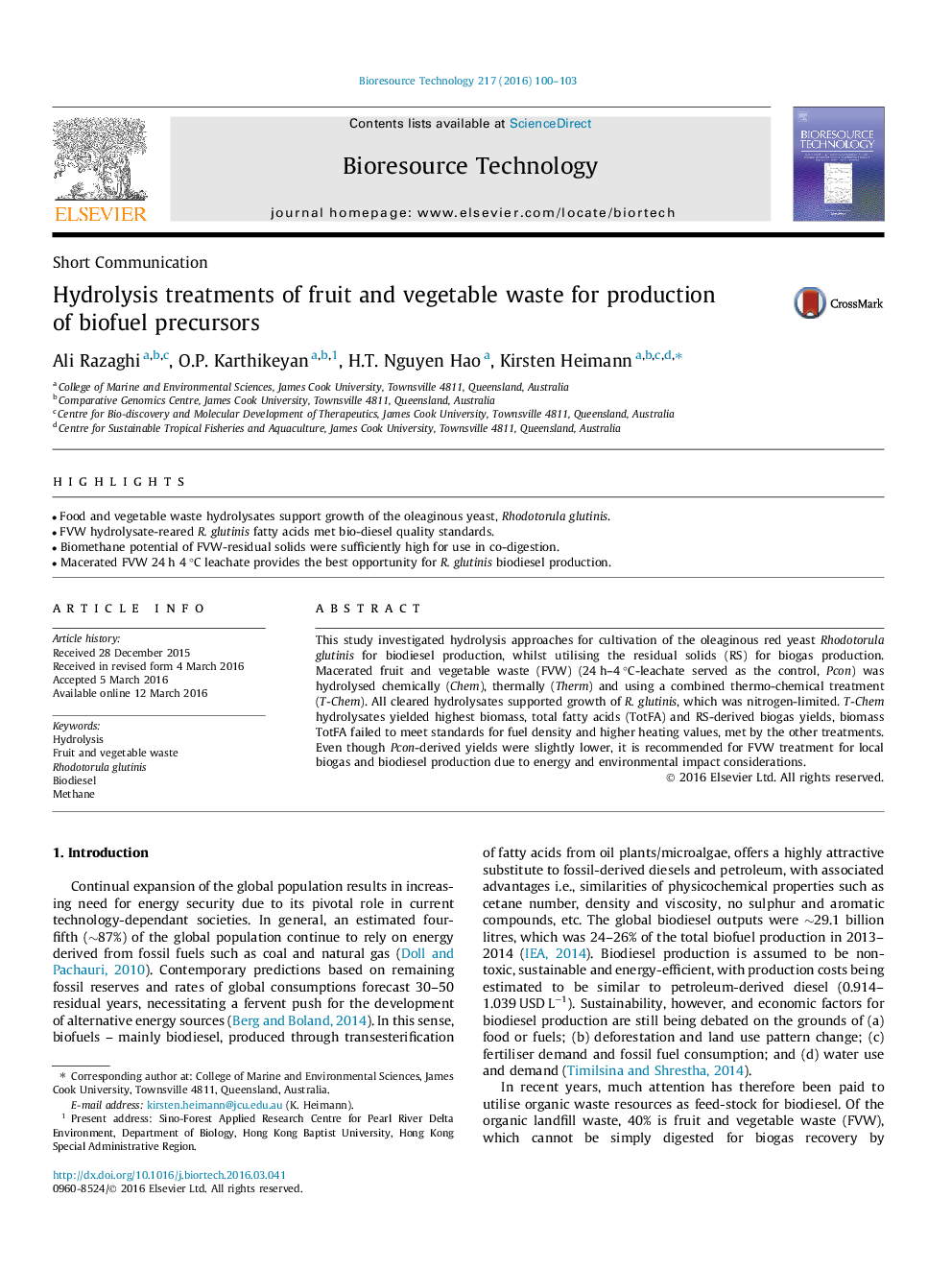| Article ID | Journal | Published Year | Pages | File Type |
|---|---|---|---|---|
| 679144 | Bioresource Technology | 2016 | 4 Pages |
•Food and vegetable waste hydrolysates support growth of the oleaginous yeast, Rhodotorula glutinis.•FVW hydrolysate-reared R. glutinis fatty acids met bio-diesel quality standards.•Biomethane potential of FVW-residual solids were sufficiently high for use in co-digestion.•Macerated FVW 24 h 4 °C leachate provides the best opportunity for R. glutinis biodiesel production.
This study investigated hydrolysis approaches for cultivation of the oleaginous red yeast Rhodotorula glutinis for biodiesel production, whilst utilising the residual solids (RS) for biogas production. Macerated fruit and vegetable waste (FVW) (24 h–4 °C-leachate served as the control, Pcon) was hydrolysed chemically (Chem), thermally (Therm) and using a combined thermo-chemical treatment (T-Chem). All cleared hydrolysates supported growth of R. glutinis, which was nitrogen-limited. T-Chem hydrolysates yielded highest biomass, total fatty acids (TotFA) and RS-derived biogas yields, biomass TotFA failed to meet standards for fuel density and higher heating values, met by the other treatments. Even though Pcon-derived yields were slightly lower, it is recommended for FVW treatment for local biogas and biodiesel production due to energy and environmental impact considerations.
